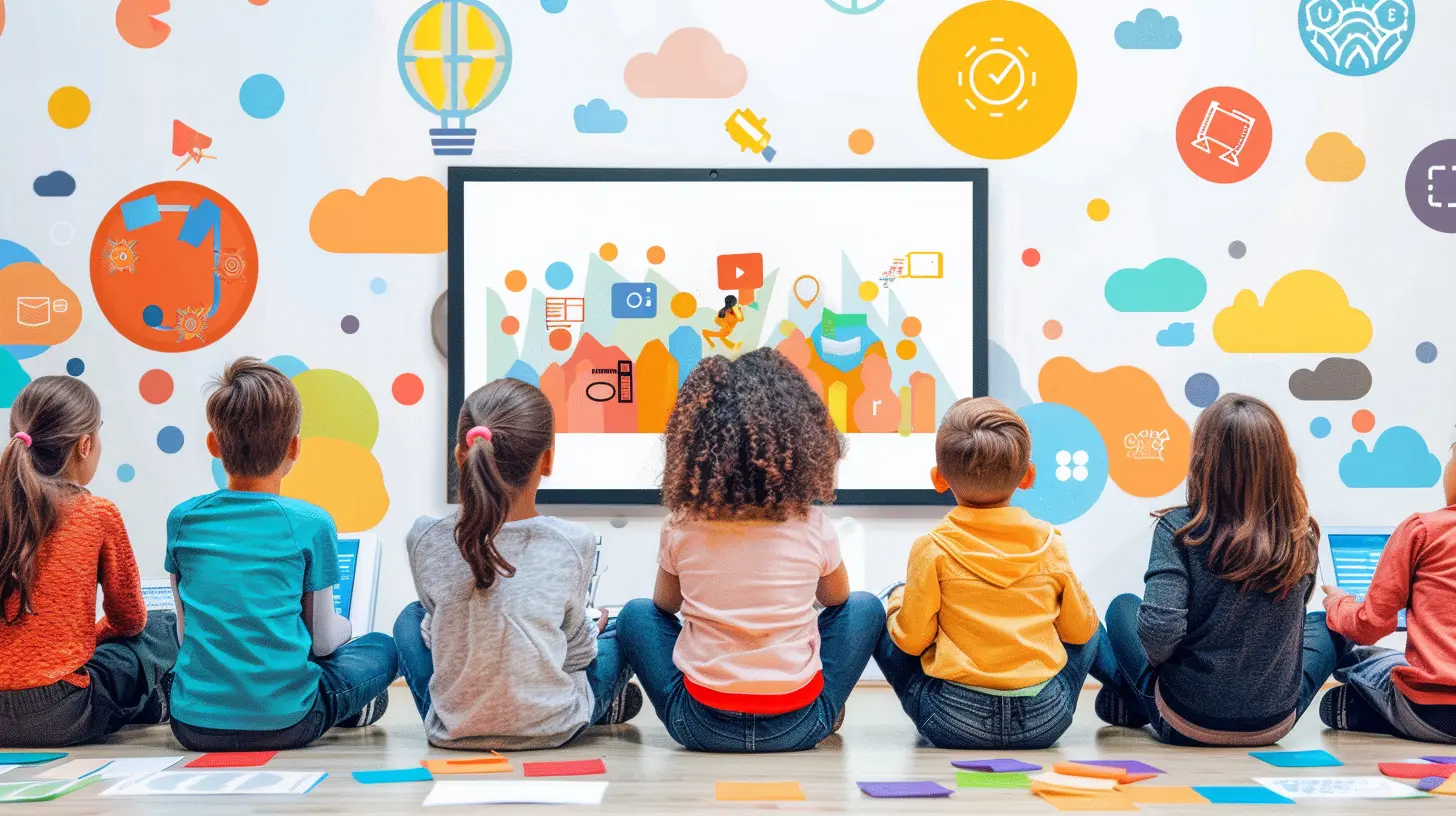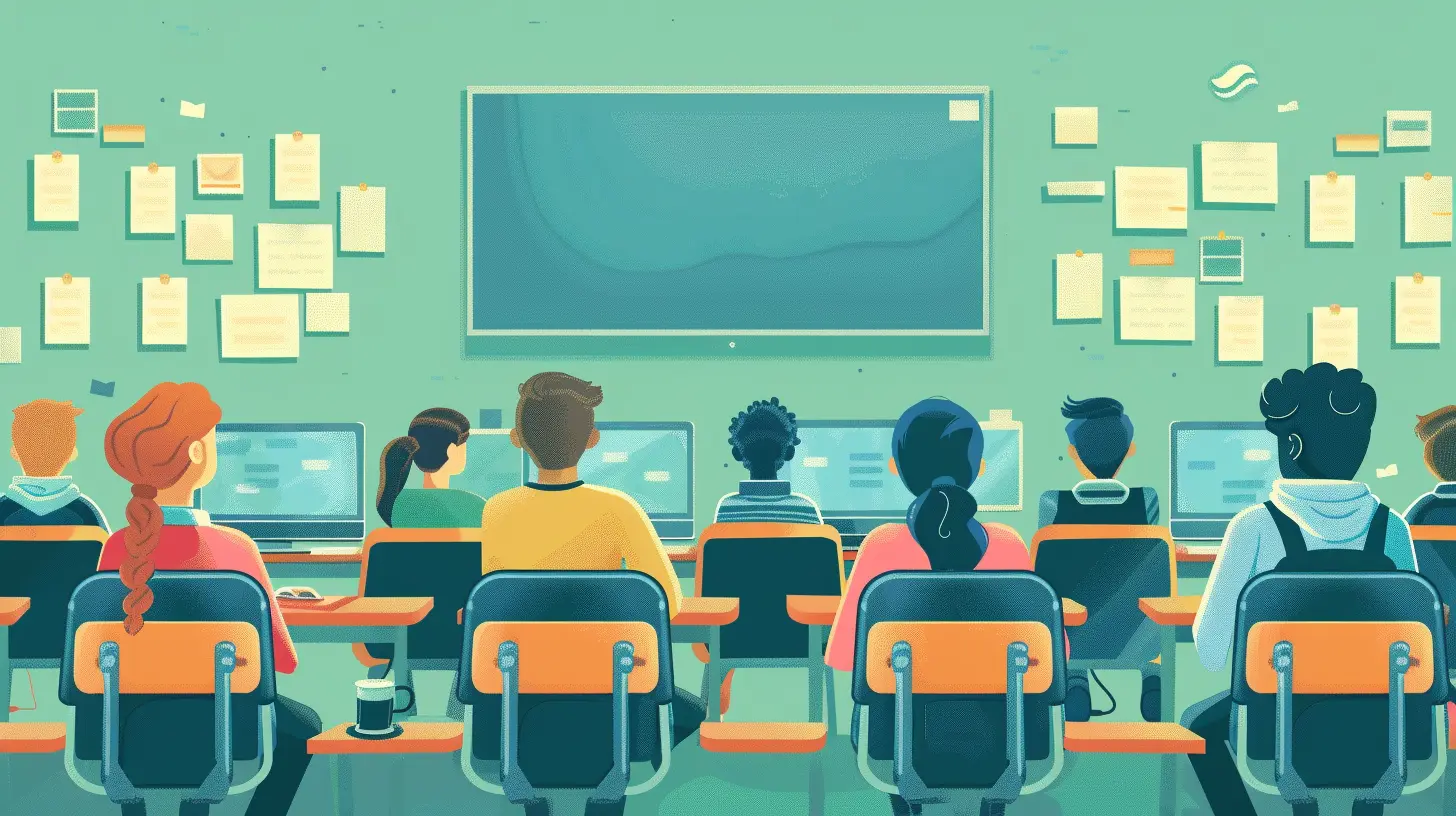How to Successfully Implement EdTech in Your Classroom"
8 May 2025
Technology has revolutionized almost every aspect of our lives, and education is no exception. With the rise of Educational Technology (EdTech), classrooms are becoming more engaging, interactive, and efficient. But let's be honest—just throwing some tablets into the mix won’t magically transform the learning experience. Successfully implementing EdTech in your classroom requires careful planning, the right tools, and a strategic approach.
So, how can you effectively integrate technology into your teaching without overwhelming yourself or your students? Let’s break it down step by step. 
1. Understand Your Educational Goals
Before diving headfirst into EdTech, take a step back and ask yourself:- What do I want to achieve with technology in my classroom?
- Will it enhance learning outcomes, or will it just be a distraction?
- How can tech make learning more accessible and engaging for all students?
Technology should serve as a tool to support learning, not replace traditional teaching methods. Whether you want to improve collaboration, boost engagement, or personalize student learning, your goals will help determine the right tools for the job.
Pro Tip:
Define clear learning objectives before picking any EdTech tools. This ensures that technology aligns with your curriculum and enhances, rather than complicates, the learning experience.
2. Choose the Right EdTech Tools
Not all EdTech tools are created equal. Some are game-changers, while others might not fit your classroom needs. When selecting a tool, consider:✅ Ease of use: Is it simple for both teachers and students?
✅ Functionality: Does it truly add value to the learning experience?
✅ Compatibility: Will it work with your existing syllabus and devices?
✅ Affordability: Can your school afford it in the long run?
✅ Security & Privacy: Does it comply with student data protection laws?
Popular EdTech Tools to Consider:
- Google Classroom – Streamlines assignments and communication.- Kahoot! – Gamifies quizzes and fosters student engagement.
- Nearpod – Interactive lessons with real-time feedback.
- Flip (formerly Flipgrid) – Encourages student discussions via short videos.
- Seesaw – A digital portfolio for student work and parent-teacher communication.
If a tool meets your objectives and is easy to use, you’re on the right track! 
3. Start Small and Scale Gradually
One of the biggest mistakes teachers make when adopting EdTech? Trying to implement too much at once. You don’t need to overhaul your entire teaching style overnight!How to Start Small:
- Introduce one tool at a time- Use technology for a single lesson or activity before expanding
- Get student feedback to see what works and what doesn’t
- Slowly integrate more features as you and your students get comfortable
Think of implementing EdTech like learning a new dance—start slow, master the steps, and then add complexity as you grow confident. 
4. Train Yourself and Your Students
No matter how advanced the technology is, it's only as effective as the people using it. That’s why teacher and student training is crucial.For Teachers:
- Attend professional development workshops- Watch online tutorials and webinars
- Join teacher communities to share insights
- Experiment with the technology before introducing it to students
For Students:
- Begin with a tech orientation session- Create simple walkthrough guides
- Assign easy, low-stakes tasks to build confidence
- Offer peer support systems where tech-savvy students help others
Making sure everyone knows how to use the technology properly can prevent frustration and maximize learning outcomes.
5. Foster a Balanced Approach
EdTech is fantastic, but too much of it can backfire. Students shouldn't be glued to screens all day. Balance is key.Ways to Maintain Balance:
- Blend traditional and digital teaching methods (blended learning)- Encourage hands-on activities alongside digital tasks
- Set screen time limits where necessary
- Foster real-world collaboration – not just online interactions
Remember, technology should enhance education, not replace essential skills like critical thinking, communication, and teamwork.
6. Encourage Student Engagement and Ownership
Students love technology—so why not let them take the lead sometimes?Empower students by:
✔ Letting them choose tech tools for certain projects
✔ Encouraging them to create content (videos, blogs, presentations)
✔ Using gamification to make learning more interactive
✔ Giving them a voice in the digital learning experience
When students feel like they have control over their learning, they become more motivated and invested in the process.
7. Address Technical Issues Before They Become Problems
Tech glitches are inevitable. Wi-Fi goes down, apps crash, and files disappear. Instead of scrambling at the last minute, be proactive.Preventative Measures:
🛠 Have a backup plan – Always prepare a tech-free alternative.📶 Check the internet connection – Verify Wi-Fi strength before class.
🔄 Test tools in advance – Don’t introduce new tech without a trial run.
🆘 Know where to get help – Familiarize yourself with IT support options.
A well-prepared teacher ensures that technical hiccups don’t derail the entire lesson.
8. Evaluate and Adapt
The best way to ensure successful EdTech integration? Regular evaluation.Guiding Questions for Assessment:
- Are students engaged and learning better with the technology?- Does it make my teaching more effective or more complicated?
- What feedback do students and parents have?
- Are there alternative tools that might work better?
If something isn’t working, don’t be afraid to pivot and tweak your approach. Effective EdTech integration is an ongoing process, not a one-time setup.
Final Thoughts
Successfully implementing EdTech in your classroom isn’t just about using the latest gadgets—it’s about enhancing the learning experience in meaningful ways. When done right, technology can make lessons more engaging, help personalize education, and prepare students for the digital world.Start small, stay flexible, and always keep the learning objectives at the heart of your tech integration. With thoughtful execution, EdTech can transform your classroom into a dynamic, interactive learning environment.
all images in this post were generated using AI tools
Category:
Classroom TechnologyAuthor:

Olivia Lewis
Discussion
rate this article
5 comments
Joel McPherson
Great insights! Implementing EdTech can truly enhance learning experiences. It's all about finding the right tools and fostering a supportive environment for both educators and students. Keep it up!
May 13, 2025 at 7:26 PM

Olivia Lewis
Thank you! I completely agree—choosing the right tools and creating a supportive environment are key to successful EdTech implementation.
Will McQuaid
This article offers valuable insights on integrating EdTech in the classroom. Balancing technology with traditional methods can enhance learning, but careful planning and training are essential for successful implementation.
May 13, 2025 at 3:03 AM

Olivia Lewis
Thank you for your feedback! I'm glad you found the insights valuable. Balancing technology and traditional methods is indeed crucial for effective EdTech implementation.
Valen Cain
Implementing EdTech in the classroom is not just an option; it's a necessity for enhancing learning experiences. By strategically integrating technology, educators can engage students more effectively, foster collaboration, and personalize learning. Embrace the change and watch your teaching transform for the better!
May 12, 2025 at 6:26 PM

Olivia Lewis
Thank you for your insightful comment! You're absolutely right—strategic EdTech integration is key to enhancing student engagement and personalizing learning experiences. Embracing these tools truly transforms education!
Iliana Graham
Embrace the future of learning! Integrating EdTech transforms classrooms into dynamic environments where creativity and collaboration thrive. Let's empower our students together!
May 10, 2025 at 10:49 AM

Olivia Lewis
Absolutely! Embracing EdTech not only enhances engagement but also fosters collaboration and creativity, creating vibrant learning environments for our students. Let's lead the way together!
Felicity Chapman
Embrace the tech revolution unapologetically! Successful EdTech implementation isn't optional—it's essential. Dive in, adapt fast, and transform your classroom into a dynamic learning hub!
May 9, 2025 at 12:50 PM

Olivia Lewis
Thank you! Embracing EdTech is key to enhancing learning experiences. Let's transform our classrooms together!
MORE POSTS

The Benefits of Experiential Learning in Increasing Engagement

Engaging Students with Socratic Seminars and Thoughtful Dialogue

The Teacher's Role in Nurturing Multiple Learning Styles

How to Build a Classroom Environment That Inspires Artistic Expression

How to Stay Motivated During Long Study Periods